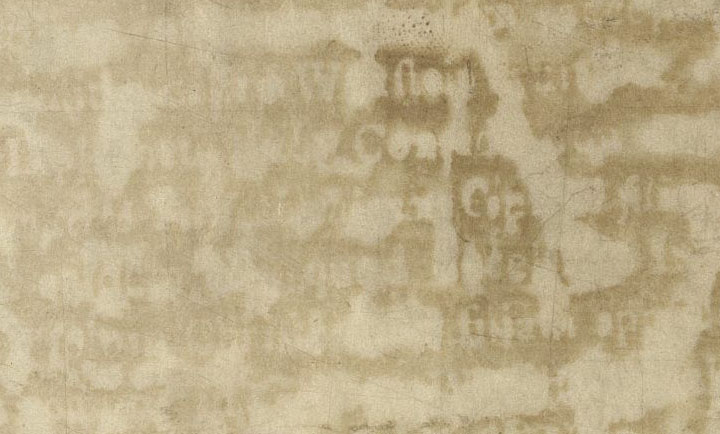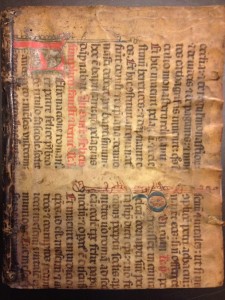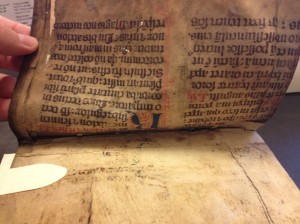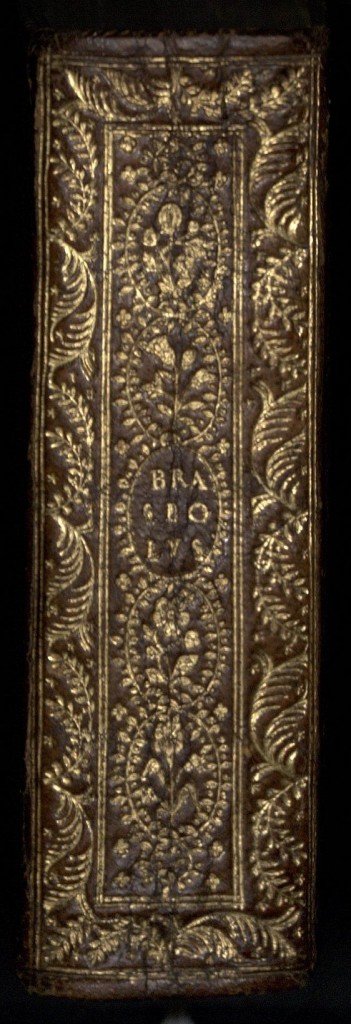Posted by James Capobianco under
cool stuff ,
rarebooksComments Off on Making an impression on vellum

Text on the lower cover of fBr 1201.15.7, rotated and flipped. How did it get there?
This is a bibliographic mystery from a book that I recently ran across in the Houghton Library, f Br 1201.15.7, which is a Life of Ælfred the Great, in Latin, from 1678. For this question, the content of the book isn’t so important. The contemporary vellum cover, over paper boards, is the highlight. The lower cover seems to have an impression of type on it, lighter than the vellum surrounding. It’s rather difficult to read any of it, since it is reversed and not very clear, but it seems to have come from a printed text — not, I should note, the text of the book it covers, which has a much larger typeface.
When the book came to Harvard in 1904, it went to Gore Hall (shelf mark 3451.29), and was shelved with other books on English history on the East Stack – Fourth Floor, rows 1-8. Then, when Widener Library opened in 1915, the call number was changed to Br 1201.15.7, and it was shelved with other Br books. If a shelf guide from before the 1999 Widener renovation was accurate in 1915, the book would have been shelved on level 2, south or west. When it came to Houghton is not entirely clear, but it was most likely in the 1940s or 1950s. I would guess the text impression dates from before the 1940s, and one would hope before it came to Harvard in 1904.
How did the impression get on the vellum? Was a printed page pressed onto the vellum? Could that have caused the discoloring that seems to have lasted quite a while? Was heat or moisture involved? There is definite sign of other interesting events in the life of this book, including some trauma that propagated more than a dozen pages in, tearing the paper in the process. Has anyone seen another example of this in their collections? Any thoughts are welcome in the comments. [Below, are images of the whole lower cover, first rotated 180 degrees and flipped horizontally, to make the text most readable; second, in the original orientation]











